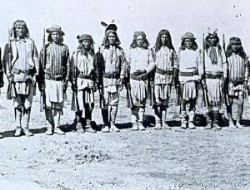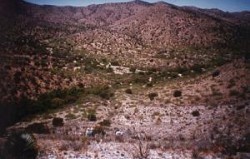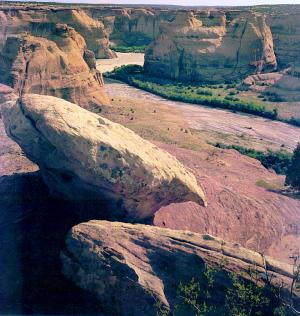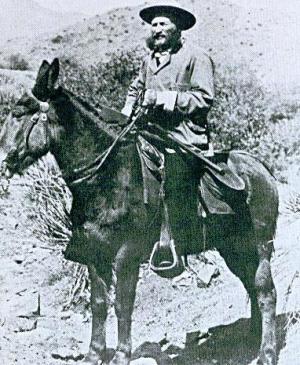
Located on the White Mountain Apache Reservation, the Battle of Cibecue, August 30, 1881, was brought on by the influence of a shaman, Nockadelklinne, who preached a doctrine of raising the dead and removing the white interlopers from Arizona.
Alarmed civilians and military personnel wanted the shaman arrested. Fighting erupted shortly after Nockadelklinne’s arrest along Cibecue Creek.
The Prophet, as he was called, died in the aftermath, as did several soldiers under Col. Eugene Asa Carr.
Most of Carr’s casualties resulted from the mutiny of the White Mountain Apache scouts.
The Cibecue affair touched off a general outbreak that saw Chiricahua and Warm Springs Apaches such as Naiche, Juh, and Geronimo bolt the reservation and plunge Arizona, New Mexico, and northern Mexico into two years of turmoil.
Cibecue battlefield is located in the village of Cibecue. No marker denotes the site.
Apache Pass, Fort Bowie, Arizona

Located in forbidding Apache Pass, a landmark on the Overland Stage road, Fort Bowie played a significant role in the wars with the Chiracahua Apaches.
Here in February 1861, even before the fort was established, Lt. George Bascom faced Cochise in a dramatic confrontation that touched off a quarter-century of bloody hostilities between the Chiricahuas and white invaders, and a personal ten-year war between Cochise and the U.S. Army. General James H. Carleton, leading a Federal army eastward in 1862 to head off the Confederate invasion of New Mexico, founded Fort Bowie, and fought for two days, July 15 and 16, a battle with the Apaches for control of the nearby Apache Springs.
Capt. George Randall, leading a small force including Apache scouts, surprised a rancheria ensconced near the crest of Turret Peak. The battle at Turret Peak proved to the Indians that there was no sanctuary from the soldiers.
Thereafter, until the final surrender of Geronimo, the post operated as a base for scouts, patrols, and major offensives against the Apaches. Most notably, Fort Bowie served as headquarters of Gen. George Crook and his successor Nelson A. Miles in the campaigns deep into Mexico that brought about the surrender of Geronimo and his band.
From the Fort Bowie parade grounds in September 1886, Geronimo and his people started on their journey to Florida and imprisonment. The site is operated by the National Park Service.
Encounters between the United States Army and American Indians occurred in many places throughout the nineteenth century. Sometimes the encounters were peaceful, but other times the two diverse cultures clashed.
Canyon de Chelly, Arizona

This Navajo citadel was the scene of climatic events in the conquest of the Navajo Indians by the U.S. Army. Col. Christopher C. "Kit" Carson’s invasion of this bastion of Navajo defenses in the winter of 1863 - 1864 was a final blow that convinced most of the tribe to surrender.
Some 8,000 Navajos, three-fourths of the tribe, participated in the tragic "Long Walk" across New Mexico to Bosque Rendondo.
In 1868, after four years of exile, they were allowed to return to their homeland. The site is operated by the National Park Service.
Turret Peak, Arizona

General George Crook
The Battle of Turret Peak in south central Arizona was one of the pivotal fights that broke the backs of the Apaches and Yavapais in their efforts to resist white encroachment into their lands.
Fought on March 27, 1873, the battle of Turret Peak formed part of Gen. George Crook’s Tonto Basin campaign to force the Apaches and Yavapais to submit to reservations.
Capt. George Randall, leading a small force including Apache scouts, surprised a rancheria ensconced near the crest of Turret Peak. The battle at Turret Peak proved to the Indians that there was no sanctuary from the soldiers.
Two weeks later, most of the Apaches and Yavapais surrendered to Crook at Camp Verde, Arizona. The site is within the jurisdiction of the National Forest Service.
This website uses cookies that are necessary to its functioning and required to achieve the purposes illustrated in the privacy policy. By accepting this OR scrolling this page OR continuing to browse, you agree to our Privacy Policy